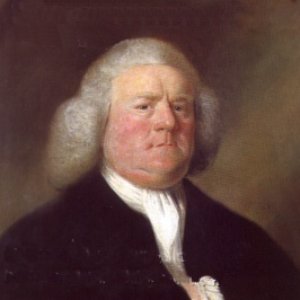Early Life and Musical Beginnings
Georg Matthias Monn, born on April 9, 1717, in Vienna, Austria, emerged as a pivotal figure in the transition between the Baroque and Classical periods of Western music. Growing up in a musical family, Monn was immersed in the rich cultural tapestry of Vienna from an early age. His father, Georg Johann Mann, was a schoolteacher and his older brother, Johann Christoph Mann, was an accomplished organist. This nurturing environment laid the foundation for Monn’s future musical endeavors.
As a young boy, Monn displayed a remarkable aptitude for music. He received his early musical education from his family members, particularly his brother Johann Christoph. This early exposure to music theory and performance set the stage for Monn’s later innovations in compositional form and style.
Musical Education and Early Career
Monn’s formal musical education took place in Vienna, a city renowned for its vibrant musical scene. He studied organ and composition, honing his skills under the tutelage of some of the city’s finest musicians. Although details of his specific teachers are scarce, it’s clear that Monn absorbed the rich musical traditions of Vienna while simultaneously developing his own unique voice.
By his early twenties, Monn had already secured a position as an organist at the Karlskirche, one of Vienna’s most prestigious churches. This role not only provided him with a steady income but also offered a platform to showcase his burgeoning compositional talents. It was during this period that Monn began to experiment with musical forms, pushing the boundaries of what was considered acceptable in the Baroque tradition.
Innovations in Symphonic Form
Monn’s most significant contributions to music history came in the realm of instrumental music, particularly in the development of the symphony. In the 1740s, he composed a series of symphonies that were groundbreaking for their time. Monn expanded the traditional three-movement sinfonia form, adding a fourth movement – typically a minuet and trio. This innovation laid the groundwork for the classical symphony as we know it today.
Key features of Monn’s symphonies include:
- Clear structural organization
- Thematic development across movements
- Increased emotional expressiveness
- Integration of dance-like elements (minuet and trio)
These elements would later become hallmarks of the Classical style, influencing composers such as Haydn and Mozart. Monn’s symphonies thus serve as a crucial link between the Baroque concerto grosso and the fully developed Classical symphony.
The Keyboard Concerto: A New Direction
Perhaps even more revolutionary was Monn’s work in the realm of the keyboard concerto. His Concerto for Harpsichord in D major, composed around 1750, is considered one of the earliest examples of a keyboard concerto in the new galant style. This piece showcased Monn’s forward-thinking approach in several ways:
- The solo part was fully integrated with the orchestra rather than merely accompanying it.
- The concerto’s structure featured clearly defined sections and thematic development.
- It incorporated elements of the emerging sonata form.
This concerto foreshadowed the classical concerto form that would be perfected by Mozart in the following decades. Monn’s innovative approach to the relationship between soloist and orchestra paved the way for the virtuosic keyboard concertos of the late 18th and early 19th centuries.
Blending Old and New: Monn’s Unique Style
Despite his innovations, Monn’s music retained elements of the Baroque style, creating a unique fusion that epitomized the transitional period in which he lived and worked. His compositions often featured:
- Contrapuntal techniques reminiscent of the Baroque era
- Newer, more homophonic textures gaining popularity in the galant style
- A balance between structural complexity and melodic clarity
This blend of old and new made Monn’s music both accessible to his contemporaries and influential for future generations. His ability to bridge these two musical worlds places him as a key figure in the evolution of Western classical music.
Sacred Music and Other Works
Beyond his instrumental works, Monn was also a prolific composer of sacred music. His output in this genre included:
- Masses
- Motets
- Other liturgical pieces
These compositions were well-received in Vienna’s churches, showcasing Monn’s versatility as a composer and his deep understanding of both sacred and secular musical traditions. While less revolutionary than his instrumental works, Monn’s sacred music demonstrates his mastery of established forms and his ability to infuse them with his own unique style.
Legacy and Rediscovery
Tragically, Monn’s promising career was cut short by his untimely death on October 3, 1750, at the age of just 33. Despite his brief life, his impact on the development of classical music was significant and lasting. Many of his innovations in form and style were adopted and further developed by the great masters of the Classical period who followed him.
In the years following his death, Monn’s music fell into relative obscurity, overshadowed by the towering figures of Haydn, Mozart, and Beethoven. However, music historians and performers in the 20th and 21st centuries have begun to rediscover and appreciate Monn’s contributions. His works are now recognized as crucial links in the evolution of classical music forms, bridging the gap between the Baroque and Classical periods.
Famous Works
While many of Monn’s compositions have been lost to time, several key works have survived and continue to be performed and studied today:
- Symphony in G minor (c. 1740s)
- Concerto for Harpsichord in D major (c. 1750)
- Concerto for Violoncello in G minor
- Several string quartets and trio sonatas
- Masses and other sacred works
These pieces provide a window into Monn’s innovative spirit and his role in shaping the future of classical music.
Influence on Later Composers
Monn’s influence can be traced through the works of several major composers who followed him:
- Joseph Haydn, often called the “Father of the Symphony,” likely drew inspiration from Monn’s four-movement symphonic structure.
- Wolfgang Amadeus Mozart’s piano concertos show a clear lineage from Monn’s early experiments with the form.
- The development of sonata form, a key feature of Classical era music, owes much to Monn’s early explorations in thematic development and structural organization.
Conclusion: Georg Matthias Monn’s Enduring Legacy
Georg Matthias Monn’s legacy serves as a reminder of the often-overlooked figures who play pivotal roles in shaping musical history. His innovative spirit, willingness to experiment with established forms, and ability to blend old and new techniques make him a true pioneer of his time.
As we continue to explore and perform Monn’s music today, we gain not only a deeper appreciation for the roots of classical music but also a glimpse into the creative mind of a composer who dared to push the boundaries of his art. In the grand symphony of music history, Georg Matthias Monn’s voice may have been brief, but its echoes continue to resonate, inspiring musicians and music lovers alike to explore the rich tapestry of classical music’s evolution.
Monn’s story reminds us that innovation often comes from unexpected sources and that the true impact of an artist’s work may not be fully recognized in their own time. As we continue to uncover and appreciate Monn’s contributions, we enrich our understanding of music history and pay tribute to a composer whose vision helped shape the classical music we know and love today.

